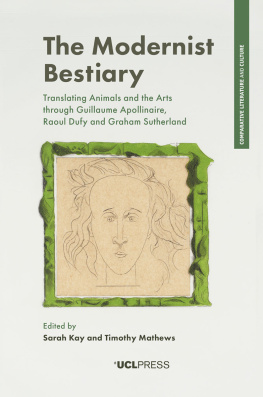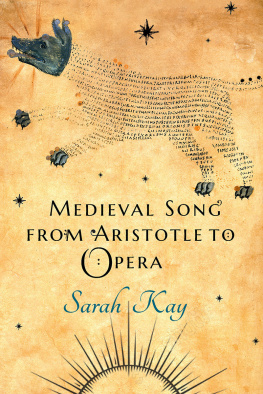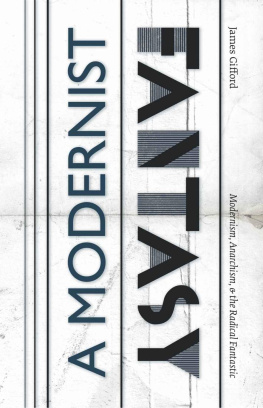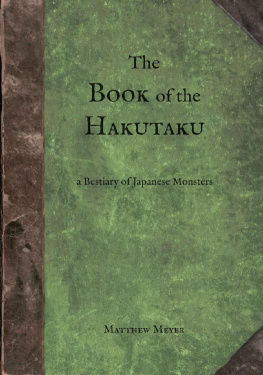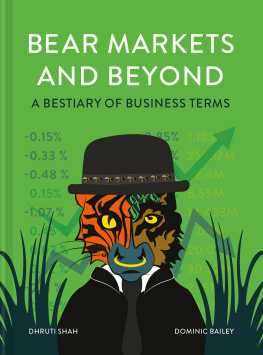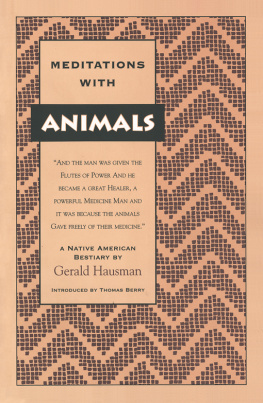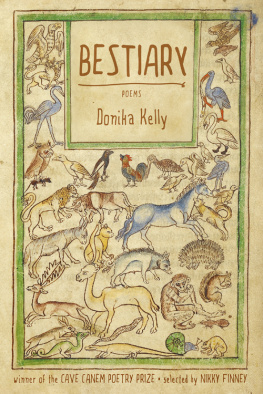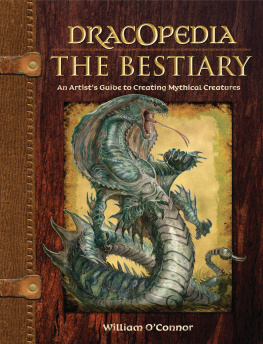Sarah Kay - The Modernist Bestiary
Here you can read online Sarah Kay - The Modernist Bestiary full text of the book (entire story) in english for free. Download pdf and epub, get meaning, cover and reviews about this ebook. year: 2020, publisher: Book Network Intl Limited trading as NBN International (NBNi), genre: Art. Description of the work, (preface) as well as reviews are available. Best literature library LitArk.com created for fans of good reading and offers a wide selection of genres:
Romance novel
Science fiction
Adventure
Detective
Science
History
Home and family
Prose
Art
Politics
Computer
Non-fiction
Religion
Business
Children
Humor
Choose a favorite category and find really read worthwhile books. Enjoy immersion in the world of imagination, feel the emotions of the characters or learn something new for yourself, make an fascinating discovery.
- Book:The Modernist Bestiary
- Author:
- Publisher:Book Network Intl Limited trading as NBN International (NBNi)
- Genre:
- Year:2020
- Rating:3 / 5
- Favourites:Add to favourites
- Your mark:
- 60
- 1
- 2
- 3
- 4
- 5
The Modernist Bestiary: summary, description and annotation
We offer to read an annotation, description, summary or preface (depends on what the author of the book "The Modernist Bestiary" wrote himself). If you haven't found the necessary information about the book — write in the comments, we will try to find it.
The Modernist Bestiary — read online for free the complete book (whole text) full work
Below is the text of the book, divided by pages. System saving the place of the last page read, allows you to conveniently read the book "The Modernist Bestiary" online for free, without having to search again every time where you left off. Put a bookmark, and you can go to the page where you finished reading at any time.
Font size:
Interval:
Bookmark:
The Bestiary or the Procession of Orpheus was Graham Sutherlands last major work. The prints he made to accompany Apollinaires poems of the same title, published in 1911 and originally illustrated by Raoul Dufy, were exhibited at Marlborough Fine Art in London in 1979, the year before Sutherland died. Not all Apollinaires poems were included, and Sutherland added an extra image unrelated to the text. In the exhibition catalogue, Sutherland described his initial discomfort at being asked to make drawings for what was to be a bilingual Italian/French edition:
I dont always feel really at home making illustrations, tending to feel that I am a prisoner of the text. Moreover I have to admit that at the time I knew very little about Apollinaire, except as an activator during the revolutionary years of literature and painting in Paris. But I read the poems and very especially the notes, and in the summer of 1978 decided to have a try and produced a few gouaches the more I thought of the poems, the more I felt that the work might be within my capacity after all and who in truth could resist such a line as among the heavenly hierarchies we can see beings of unknown shape and surprising beauty?
The most fabulous of the creatures in Sutherlands 1978 Bestiary is the final one, the ox, also the last in Apollinaires Bestiaire . Of Le Buf, Apollinaire wrote, Ce chrubin dit la louange / Du paradis / This cherub speaks in praise/Of Heaven In Sutherlands print, the winged ox or bull, horned head haloed by the moon, seems to hurtle down or spin in a dark cloud towards a green wood. Out of the black clouds and swarming around the cherubim are monstrous forms of unknown shape. At the bottom, a small doorway opens onto bright green light; on our side of the opening, two smaller creatures hover: the winged ox, again upside down, and a donkey the ox and ass, perhaps, of the Bible, who witnessed the birth of Christ. A winged ox is the symbol of the evangelist St Luke, too, which had figured in Sutherlands designs for the tapestry for Coventry Cathedral, Christ in Glory , of 1962. As well as the multiple biblical associations, though, this scene in Sutherlands Bestiary echoes with references to Dantes Inferno . In canto IV, Dante sees the great spirits who, through no fault of their own, were not baptised and thus cannot go to heaven. Limbo is a green meadow, an open area full of light, and Dante sees on the enamelled green the shades of philosophers, scientists, heroes and poets of the ancient world, including Orpheus.
Orpheus, Apollinaire tells us in his notes, was not only the first musician, with his tortoiseshell lyre, a poet and singer, the inventor of all the sciences and all the arts, but also a magician and prophet who predicted the coming of Christ. References to Christianity as well as classical and medieval myth and legend are scattered through Apollinaires Bestiaire , and the final poem ends with a cheery if ironic nod to a future life:
Ce chrubin dit la louange
Du Paradis, o, prs des anges,
Nous revivrons, mes chers amis,
Quand le bon dieu laura permis.
This cherub speaks in praise
Of Heaven, and there, with the angels
My friends, we will live again,
When the good lord allows.
While the cherubim in Apollinaires poem may sing of paradise, it is a gateway to a green light that Sutherland shows, the limbo outside both heaven and the lightless depths of hell, where Orpheus would wait forever. Sutherland engages visually in subtle ways with the tensions between Christianity and the classical myths; the powerful effect of Sutherlands print lies partly in the contrasts between the tiny emerald-green opening onto a beyond and the dark wood, the golden light around the cherubs head, and the disturbing phallic and bulging shapes of the monsters. There is promise, but perhaps only of limbo, and there are threats. Tension was a crucial aspect of Sutherlands visual approach. Of his thorn pictures and the early Northamptonshire Crucifixion , he wrote: One reacts to the reality of tension in a subject, physical and spiritual or psychological; and that tension paraphrased and ordered should become immediate and intensified in ones painting.
The winged ox and cherub combined is the only mythological hybrid animal in the Bestiary . Lured as he was by the promise of unknown beings of surprising beauty, Sutherlands beasts in this bestiary are nonetheless mostly close to nature, although exactly what this means with respect to traditions of representation is not straightforward in the history of Sutherlands engagement with animals. The 1978 Bestiary was the third of Sutherlands bestiaries, following on from The Bees (19767) The latter set of 26 colour lithographs includes not only carefully observed birds and animals, such as a ram, a toad and an owl, but creatures in the process of transformation, such as Emerging Insect, and a curious image entitled Insect (Simulating Seeds), in which it is not clear whether the simulation is in nature or pictorial; perhaps the point is that it is both.
Animals had long fascinated Sutherland, and his treatment of them is integral to his investigation of pictorial form and of forms in nature. Animals could emerge, for example, from the suggestive morphologies of tree roots and trunks, which Sutherland might develop or leave as ambiguous shapes. When I was searching for earlier images of animals, time and again I thought I glimpsed one a bird, perhaps, or a hippopotamus, or something more mythological and hybrid only to find on checking the title that the thing was almost always vegetable rather than animal: Fallen Tree against Sunset (1940) or Green Tree Form: Interior of Woods (1940), for example. The tree trunk had momentarily suggested a corresponding but different association: animate, with legs and a snout. The hard ridges of tree bark can easily become the bristly hide of a boar or a rhinoceros. Looking first and reading the title afterwards turned out to be a way into a key and enduring aspect of Sutherlands highly individual way of perceiving and recognising forms.
Sutherlands openness to the chance encounter, to a poetry of visual analogies often inspired by a found object, is one of the aspects of his work that connects to surrealism. The link was noticed by the organisers of the 1936 International Surrealist Exhibition in London, who were scouting for exhibitors, and Sutherland was invited by Roland Penrose to contribute. The two oil paintings he sent, Thunder Sounding and Mobile Mask , were not the expected landscapes and were described by Alley as in essence jeux desprits . Sutherland was not attracted to the movement as such; he was in a sense a solitary artist, and his intransigence and aims differed from those of the surrealists:
The one field in which the surrealists helped me to widen my range was in their propagation of the idea that there was worthy subject matter for painting in objects the painter would never have looked at before Surrealism helped me to realise that forms which interested me existed already in nature, and were waiting for me to find them.
The parallels with surrealism, nonetheless, are more frequent than Sutherland acknowledged. As well as the morphological metamorphoses and interest in found objects, he was committed to making visible and present the unknown. The unknown is just as real as the known, & it must be made to look so. I want to give the look of things to my emotionally modified forms. The idea that reality is much broader than what is materially present to the eye was fundamental for the surrealists. The difference is that Sutherland pursued this in the interests of his art, of the pictorial, while for the surrealists the imagination was mobilised in the interests of the real for its own sake.
In Green Tree Form: Interior of Woods , a fallen tree thrusts outwards towards the spectator, its forked branches giving it the appearance of a monstrous undefined animal, while light falls on the near trunk, emphasising the double meaning of the word. The overall shape reappears in one of the plates in Sutherlands 1968 Bestiary , although now more clearly defined as something resembling both a hippopotamus and a rhinoceros, as Chained Beast , picking up the theme of the painting The Captive , of 19634. This chained beast had an over-determined origin: Goyas prisoners from Disasters of War , panels of lions in high relief on the faade of the Ospedale di San Marco, and a shape in the side of a lane in Kent which reminded Sutherland of a rhinoceros. Another early painting, however, Toad (1958), is a minutely observed realistic image: a fat-bellied toad slithering along outside a sewer grating. This points to a concern with observing the essential characteristics of animals: only through this demonstration of their nature do animals pay unconscious tribute to the power which created them. Although the manner of representing the chosen animals and birds in the later Bestiary is on the whole quite straightforwardly naturalistic, the imagery as a whole, the setting and scale of the creatures, is not. For example, The Elephant with its hoary skin and tusks is set in a collage-like set of scenes, with at the bottom a close-up of an open grinning or screaming mouth, which references the famous motif in Francis Bacons paintings. The human creatures Orpheus himself and the sirens are the most abstracted, recalling Sutherlands long explorations of correspondences between mechanical and organic forms. Sutherland delights in the interrelationships between the more abstract aspects of the composition and the rich associations of the animals, which reveal themselves slowly. The formats of the prints are not only extremely varied but look to traditional pictorial structures in such a way as to invite speculation about their link to the subject. The image of The Grasshopper, for example, could be the first letter of an illuminated manuscript of the late twelfth or early thirteenth century. The strong black lines structuring the image look calligraphic and echo the curious sign-like character of the grasshopper in profile. The image harks back to Cigale 1 (1948), the first of Sutherlands oil paintings of animals which shares the heraldic fixity of the later print. This was painted in the south of France, where the sound of cicada is ubiquitous.
Font size:
Interval:
Bookmark:
Similar books «The Modernist Bestiary»
Look at similar books to The Modernist Bestiary. We have selected literature similar in name and meaning in the hope of providing readers with more options to find new, interesting, not yet read works.
Discussion, reviews of the book The Modernist Bestiary and just readers' own opinions. Leave your comments, write what you think about the work, its meaning or the main characters. Specify what exactly you liked and what you didn't like, and why you think so.

